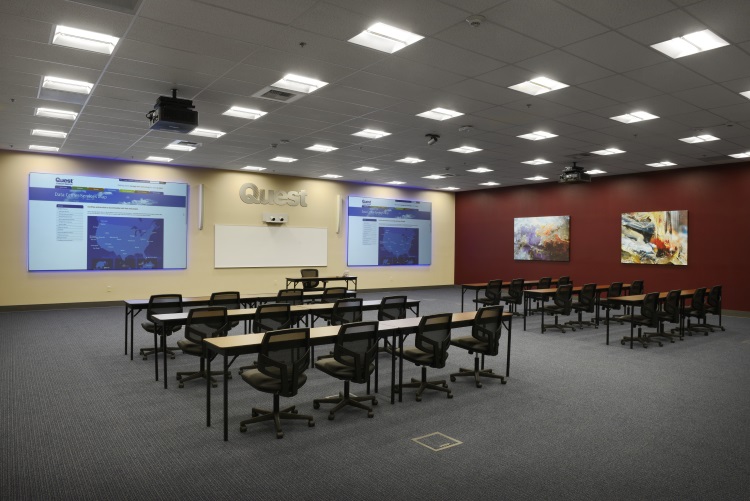BY GARY TROTT,
Vice President, Marketing, Intelligent Lighting,
Cree
www.cree.com
As the nature of our buildings evolve to meet our business and personal needs, innovators are taking advantage of the possibilities offered by the Internet of Things. Buildings are now powered by technology, managed by way of data, and reactive to the information gathered. The groundwork for smarter buildings has been laid, and its biggest enabler is right above our heads — lighting.
The 21st century building
Building structures and design are adapting to meet the needs of the constantly evolving workforce. Companies are competing for new talent in a multitude of ways, many of which include the business’s office or building space. To increase employee satisfaction, cubicles and walled offices are giving way to bright, open, flexible spaces that foster collaboration, integrate technology, and cater to personal preferences. This is especially true because more than one in three American workers today are millennials, a generation that is tech-savvy and more connected than ever — the “digital natives.”
Focus on intelligent light
To meet these demands, companies and facility managers are making strides to become leaner, faster, smarter, and better — and many are using LED lighting and IoT technology to assist in that process, especially given that lighting typically accounts for more than a quarter of a commercial building’s electricity use, or about 10% of the building’s operating costs.
With lighting’s ubiquity, it makes sense to take advantage of intelligent light as an enabler for the IoT. Companies can do so by utilizing the data generated by these intelligent enablers to improve efficiency, predict demands, optimize the productivity and work experience of employees, and contribute to a healthy bottom line.
The goal of any smart technology is to provide a better user experience that is simple and easily integrates into everyday lives. When companies choose to install LED lighting, they are installing high-power, intelligent digital appliances throughout buildings that enable better, customizable user experiences.
For example, Cree SmartCast Technology LED luminaires and lighting controls can reduce lighting energy costs by up to 70% while improving aesthetics, lowering total cost of ownership (TCO) and making the enterprise more controllable and productive. This type of connected luminaire featuring daylight and motion sensing is only the beginning.
Beyond intelligent light into the digital ceiling
Although the groundwork for IoT has been laid, most IoT systems are still basic in command and control and often require a smart phone or other facilitator to make them work. These aren’t the “smart” systems we envision when we think of the future, and they certainly do not represent the full potential of the IoT.
As intelligent lighting continues to evolve, we get a glimpse into this unlocked potential when IT and OT converge, particularly in new construction, through Power over Ethernet (PoE). PoE uses standard Ethernet cables to carry both power and data, replacing more expensive AC wiring infrastructure while networking LED lights and a complement of sensors.
Cree’s newly announced SmartCast Technology with PoE, for example, works within Cisco’s Digital Ceiling ecosystem to bring a scalable, simple, and intuitive solution that creates fundamentally better, more intelligent building environments. This technology enables customers to employ enterprise-wide asset management for lighting to remotely control, monitor, update, track, adjust, and configure every fixture and associated sensors with one keystroke.
This technology has been deployed by several companies, including Quest, a technology management leader based in Roseville, CA. The company chose Cree SmartCast Technology with PoE for the renovation of their 120,000-square-foot, 24/7-operated, High Availability Business Center (HABC). The installation is proving the benefits of LED lighting technology by creating personalized workspaces, allowing users to change color temperature per preference, and boosting employee satisfaction and productivity while realizing major energy savings (up to 70%) that can leave room in the budget for other workplace innovations.

Fig. 1: SmartCast PoE technology enables automated, personalized control of workspaces.
Improving the user experience
There is plenty of anecdotal evidence and science to support the positive effects of switching to LED lighting, but the benefits of its importance in smart environments are just scratching the surface.
If the user has to be smart to use a smart IoT device, then the device is dumb. The goal of the IoT market should be 100% interoperability, in which users literally have to do nothing to achieve a series of intelligent experiences that integrate into their space and bring tangible and intangible value greater than what previously existed.
What’s next?
Finding the best solution for your needs may seem daunting, as there are many misconceptions and concerns with smart technology, such as increased costs, complexity, interoperability, and new demands on human attention. With better lighting technology, these concerns disappear. The installation cost of SmartCast Technology, for example, is equal to or less than that of ordinary controlled LED lighting systems and is simple to install and intuitive by nature. Waiting to switch to LED technology can be costly, but once the decision is made, users can unlock the potential of what better light can do.
Advertisement
Learn more about Cree





